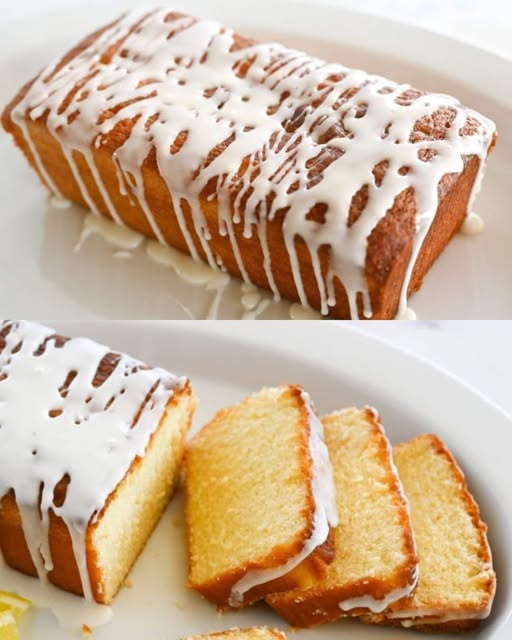Moist Lemon Buttermilk Cake Recipe
This lemon buttermilk cake is a heavenly combination of zesty citrus and tender, buttery crumb. Perfectly moist and bursting with fresh lemon flavor, it’s the ideal dessert for any occasion—whether it’s a sunny brunch, a family gathering, or just an afternoon treat with tea.
The addition of buttermilk and fresh lemon juice gives the cake a subtle tang, while the lemon zest adds a fragrant punch that lingers with every bite. Let’s dive into the details of this foolproof recipe!
Why You’ll Love This Lemon Buttermilk Cake
- Bright Citrus Flavor: Packed with fresh lemon zest and juice for an authentic, tangy taste.
- Perfectly Moist Texture: Thanks to the buttermilk, this cake is soft, tender, and never dry.
- Versatile: Enjoy it plain, dusted with powdered sugar, or drizzled with a sweet lemon glaze.
- Simple Ingredients: Uses common pantry staples for a straightforward baking experience.
Ingredients
For the Cake
- 3 cups all-purpose flour: Provides structure and stability to the cake.
- ½ teaspoon baking soda: Ensures a light and tender crumb.
- ½ teaspoon salt: Balances sweetness and enhances flavor.
- 1 cup buttermilk (low-fat is fine): Adds moisture and a slight tang.
- 2 tablespoons grated lemon zest: Infuses the cake with concentrated lemon aroma.
- 2 tablespoons fresh lemon juice: Adds a bright, citrusy kick.
- 2 sticks (1 cup) unsalted butter, softened: Creates a rich, buttery texture.
- 2¼ cups granulated sugar: Sweetens the cake and ensures a soft crumb.
- 3 large eggs: Acts as a binding agent and adds richness.
Step-by-Step Instructions
1. Preheat the Oven
Preheat your oven to 325°F (165°C). Grease a 9×5-inch loaf pan with butter or cooking spray, and lightly dust it with flour to ensure the cake doesn’t stick.
2. Mix the Dry Ingredients
In a medium-sized bowl, whisk together the all-purpose flour, baking soda, and salt. This helps evenly distribute the leavening agents throughout the flour.
3. Prepare the Buttermilk Mixture
In a separate small bowl, combine the buttermilk, grated lemon zest, and fresh lemon juice. Set this aside. The acidity of the buttermilk and lemon juice works wonders for keeping the cake moist.
4. Cream the Butter and Sugar
Using an electric mixer, cream the softened butter and granulated sugar in a large mixing bowl. Beat for 3–4 minutes until the mixture is light, fluffy, and pale in color. Proper creaming is crucial for achieving a light cake texture.
5. Add the Eggs
Add the eggs one at a time, beating well after each addition. Make sure each egg is fully incorporated before adding the next.
6. Combine the Wet and Dry Ingredients
With the mixer on low speed, add the dry ingredients to the butter mixture in three additions, alternating with the buttermilk mixture. Start and end with the dry ingredients, mixing just until everything is combined. Be careful not to overmix, as this can make the cake dense.
7. Bake the Cake
Pour the batter into the prepared loaf pan, smoothing the top with a spatula. Bake in the preheated oven for 60–75 minutes. Check for doneness by inserting a toothpick into the center of the cake; it should come out clean.
Tip: If the top starts browning too quickly, loosely cover it with aluminum foil during the last 20–30 minutes of baking.
8. Cool the Cake
Remove the cake from the oven and let it cool in the pan for 10–15 minutes. Then transfer it to a wire rack to cool completely. This step ensures the cake sets properly and slices neatly.
9. Serve and Enjoy
Slice the cooled cake and serve it plain, dusted with powdered sugar, or drizzled with a simple lemon glaze.
Lemon Glaze Recipe (Optional)
For an extra burst of lemony sweetness, make a quick glaze:
- 1 cup powdered sugar
- 2 tablespoons fresh lemon juice
Mix until smooth, then drizzle over the cooled cake.
Tips for Success
- Use Fresh Lemons: Freshly squeezed lemon juice and zest are essential for authentic flavor. Avoid bottled lemon juice, which lacks the same vibrant taste.
- Room Temperature Ingredients: Ensure your butter and eggs are at room temperature for easier mixing and better batter consistency.
- Don’t Overmix: Overmixing can lead to a dense cake. Mix just until the ingredients are combined.
- Check for Doneness: Baking times can vary, so always check the center of the cake with a toothpick before removing it from the oven.
Nutritional Information (per slice, based on 12 slices)
- Calories: 320–350 kcal
- Protein: 5–6 g
- Carbohydrates: 50–55 g
- Fat: 12–14 g
FAQs
1. Can I substitute the buttermilk?
Yes, you can make a buttermilk substitute by mixing 1 cup of milk with 1 tablespoon of lemon juice or vinegar. Let it sit for 5 minutes before using.
2. How should I store the cake?
Store the cake in an airtight container at room temperature for up to 3 days. You can also refrigerate it for up to a week or freeze slices for up to 3 months.
3. Can I use a different pan size?
If using a different pan, adjust the baking time accordingly. For example, smaller loaf pans may require less time, while a bundt pan may take longer.
4. How do I prevent the cake from sticking?
Grease the pan thoroughly with butter or cooking spray, and dust it lightly with flour. Alternatively, line the pan with parchment paper.
5. Can I make this cake gluten-free?
Yes, use a 1:1 gluten-free flour blend in place of all-purpose flour. Ensure your baking soda and other ingredients are certified gluten-free.
This lemon buttermilk cake is a must-try for anyone who loves the combination of tangy citrus and buttery sweetness. It’s simple to make, incredibly moist, and absolutely delicious! Bake it for your next gathering or enjoy a slice with your afternoon tea—you won’t be disappointed.

